In general, wine can be defined as an alcoholic drink that comes from grapes that have been fermented over some time. To produce the numerous varieties of wines on the market, many types of grapes are used, such as red, white, and rosé along with different strains of yeast.
Have you ever wondered why a lot of people tend to be very particular about the kind of wine they drink? Wines are a very interesting beverage, and learning about them can help you decide if you prefer a certain type or not. But where should you begin and what are the important things you need to know about wine?
This article about wine for beginners can provide you with all the answers to these questions. Likewise, our guide to the best value wines for newbies can narrow down your choices. So let’s go right ahead and explore the exciting world of wine and your quest to becoming a wine connoisseur.
History of Wine
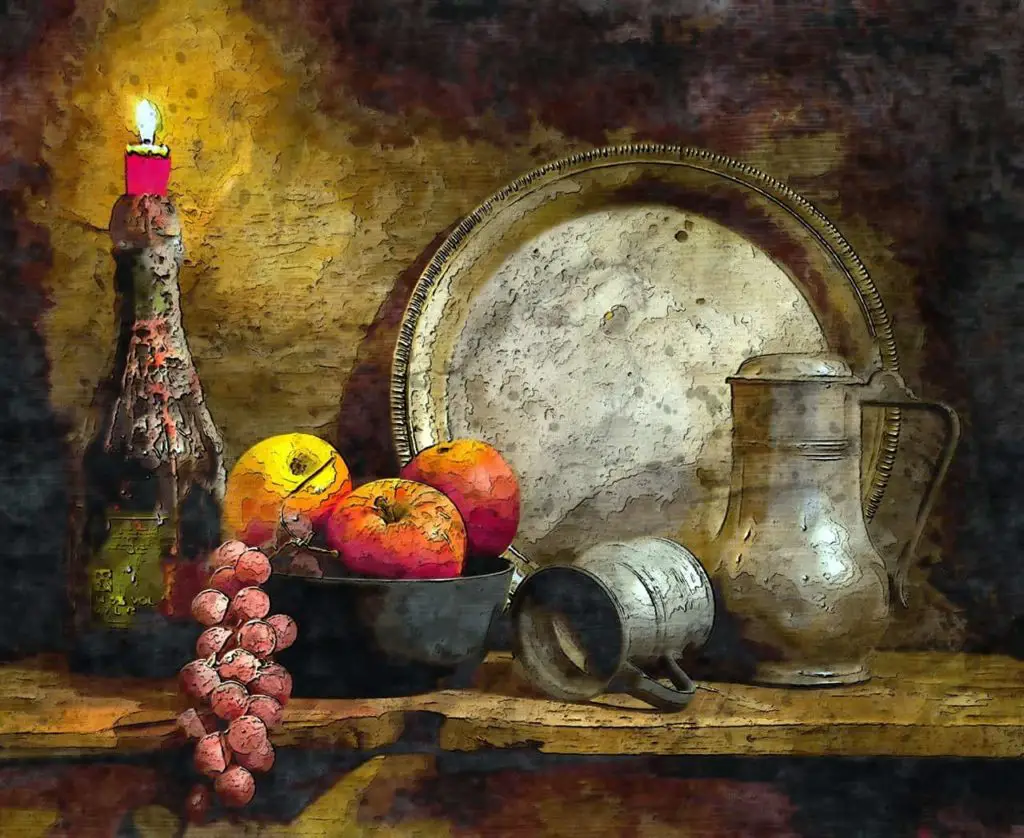
Today’s modern man believes that they are the ones who are the first true wine experts. But did you know that this drink has been around since approximately 7000 BC? In the Henan province of China, the tribes of the Yellow River Valley produced wine from fermented fruit, honey, or rice and store them in earthware jars. There are almost 50 different species of wild grapes that originate from China, and it is thought that the fruits they use may be from the wild grape species native to the country.
Meanwhile, the oldest winery in the world was established in Armenia in 4100 BC. In fact, there were discoveries of winemaking facilities in Iran, Israel, and Georgia that have earthenware vessels buried underground from about 4000 BC.
During 31000 BC when the Pharaohs made their presence known, we saw a substance similar to wine that was produced from red grapes. Because the color resembles that of the blood, the wine was utilized in numerous ceremonies. When the Egyptians introduced wines to the Phoenicians, they started to grow the grapes needed to make the beverage. And not long after, they grew the vines across the globe.
Furthermore, there was a discovery of a wine cellar that dates as far back as 1700 BC in Northern Israel. According to archeologists that made the discovery, there were over 500 gallons of wine stored in that cellar, which can fill up to 3000 bottles of wine.
Another worth noting is the Amphora in 1400 BC. This tall jug or jar with a narrow neck and a couple of handles was used by the Mycenaean and Canaanite as their main technique of shipping wine. On the other hand, the Phoenicians began trading all over the Mediterranean and the Middle East from 1200 BC to 539 BC. They traded with Italy, Greece, North Africa, and current-day Israel. Aside from trading goods, the Phoenicians also introduced grapevines and wines to these regions.
As we go further down history, we’ll see that barrels were the container of choice for storing and shipping wine in Northern Europe, most notably Gaul or France as we know today during 900 BC. These barrels were utilized for seasoning and oxidizing the wines.
At the start of 800 BC, Greeks have already been developing the process of making wine. For this reason, it became the symbol of religion, health, and trade. When the Greeks set on a quest to colonize the Mediterranean, the wines traveled with their armies. Once they settled on an area, they bring along the grapevines with them, particularly in southern Italy and Sicily. From there, wine traveled to the north.
In 200 BC, Roman soldiers were encouraged to drink around about two to three liters of wine every day to ensure they are in good health. Meantime, Bacchus was named by the Romans as their god of wine in 146 BC. During this period, not only did they formalize cultivation techniques, but the Romans also develop the terroir concept. As the Roman Empire expands over Europe, they plant vines in central European nations, as well as Spain, Italy, France, Portugal, and Germany.
When the Romans embrace the Catholic Church during 380 AD, drinking wine becomes necessary to the sacrament. At this point, the Catholic Church made the decision to start focusing on the cultivation and production of wine. Hence, the monks in France and Italy start to work as vintners and perfect the winemaking technology. Because of Catholicism, vines, and the wine itself, spread all over Europe.

Château de Goulaine, which was built in 1000 is probably the oldest winery still operating to this date.
The Modern History Of Wine
Starting from 1492 up until 1600, the Spanish conquistadors brought wine to Brazil and Mexico and soon spread throughout South America. In 1554, the Spanish missionaries established the first winery in Chile. While in 1556, they travel to Mendoza, which is a region of Argentina, where they started to grow the first grapes of the region.
There’s also a brief wine production in Florida that lasted from 1562 to 1564. Here, native groups throughout the Jacksonville area were used by the French Huguenots. However, the taste was not up to par so they stopped the production.
In the late 1500s, alcohol was combined with wine by the Dutch East India Company to make it last during long journeys. As fortification happened, Sherry, Port, Marsala, and Madeira were produced for the first time.
The first attempt to use glass wine bottles was during the 1600s. Unfortunately, the bottles were stored upright, As a result, the corks dried out, losing their seal.
In 1619, French grapevines were imported by France to Virginia. This is also the time where wine cultivation started there. Wine spreads across the eastern seaboard. Nevertheless, its popularity is not instant because of the Puritanical origins of the area.
By around 1650, Sauvignon Blanc and Cabernet Franc cross-pollinate naturally in the region of Bordeaux, giving birth to Cabernet Sauvignon.
During the colonization of South Africa by the Dutch East India Company in 1659, the latter requires a supply of wine to their sailors for the lengthy voyage going back to Europe. Because of this, they grew vines and began the production of wine.
It is in 1718 when the winemaking rules of Dom Perignon for quality winemaking were published by the abbey in Champagne. The rules include a warning regarding the use of white grapes as these can cause refermentation which can make the wine sparkling. During that period, this characteristic was considered a fault.
Wine bottles were given a makeover in 1740. There were redesigned to be laid flat, which made the wine age longer. Meanwhile, a Spanish missionary made a trip from Mexico City to California in 1769. While in San Diego, he initiated a mission and cultivated grapes to produce the first wine of the region.
As the Spanish missions expanded throughout California, the art of making wine was introduced by the Franciscan monks and the first winery in Sonoma was established in 1805.
Madeira wine was the drink being savored by the Founding Fathers while singing the United States Constitution in 1776.
In 1785, Thomas Jefferson became the Minister to France. During his stay in the country, his appreciation for French wine grew with Burgundy and Bordeaux becoming his favorites. Upon returning to the United States, he took with him French grape cuttings along with a desire to see wine flourish in Virginia.
During the mid-1800s, the popularity of sparkling wines starts to increase in the region of Champagne. The reason behind this is the consistency in its wine bottle production.
Meanwhile, we saw the position of British Resident of New Zealand designated to James Busby in 1832. When he went to Australia from New Zealand, he brought along grape cuttings. And in 1836, he founded the first vineyard there.
From 1848 to 1855, the California Gold Rush made way to individuals who are not only looking for wealth in the west. These travelers from the east coast came to the area with vines with them that were mostly indigenous to France. On top of that, they also brought along the Zinfandel grape that originated from Croatia.
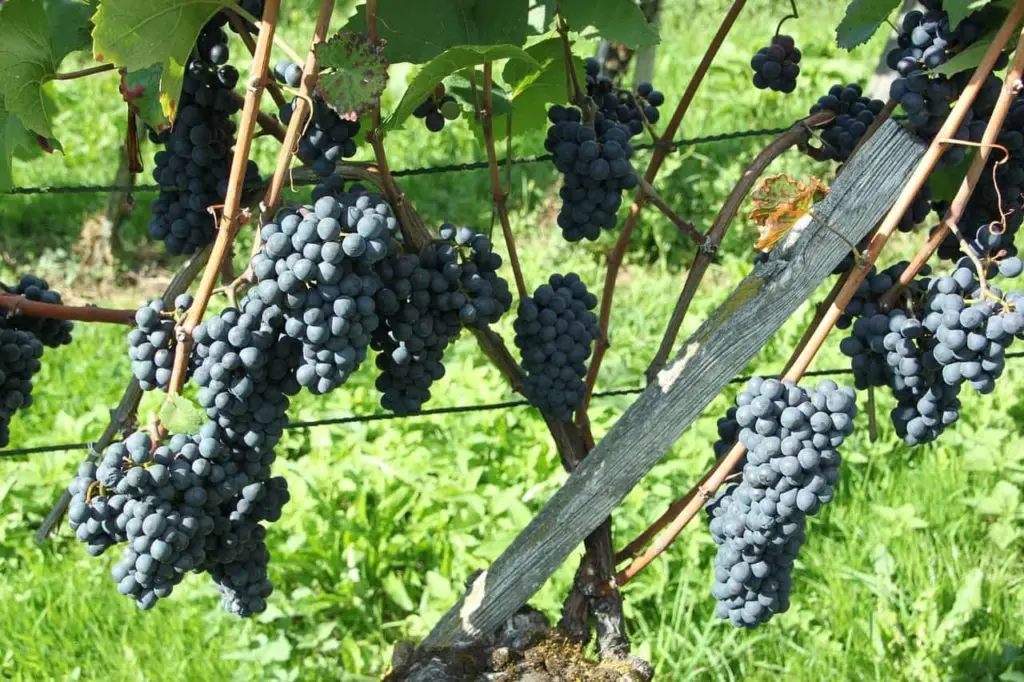
California’s first commercial winery, Buena Vista Winery, began its operation in 1857. It is located in the Sonoma Valley.
In 1862, the harmful effects of oxygen on wine were discovered by Louis Pasteur. Because of this, the entire winemaking industry began using wine bottles for their products.
During the 1860s throughout the 1870s, phylloxera almost decimated the French wine industry. This paved the way for wine production to soar in Algeria, which is a French colony. In 1830, they replanted vineyards that were planted originally by the Phoenicians, destroying the Islamic rules. But since the control of the French ceded in 1962, the wine production in Algeria has suffered a long decline. By 1900, phylloxera eradicated almost 70% of vineyards in France.
Wine Nowadays
The wine and alcohol consumption in the United States declined throughout Prohibition, from 1920 to 1933.
In the 1950s, French wines were a massive hit in the US.
The entire world was first introduced to the first bag-in-a-box wines in 1964.
As technology progressed, so does the winemaking process. With this, the commercialization of the first mechanical grape harvesters occurred in 1967 in New York.
“The Wine Advocate” that Robert Parker began in 1978 utilized the 100-point wine rating system which is still being applied today.
Meanwhile, in 1980, we saw China opening up its economy. This is when the country started to import French wine. As a result, the French began working with local partners to grow vineyards. Today, China is one of the biggest wine producers and consumers across the globe. France is the world’s number one producer of wine in the world with Italy coming in second place.
Cabernet Sauvignon took the honor of being the world’s most planted variety of wine grapes in 2010.
The history of wine may be long but it is very exciting. Now that you have a better understanding of its origin, it’s time to learn how to taste and judge wine just like a professional would.
The Correct Way to Taste Wine
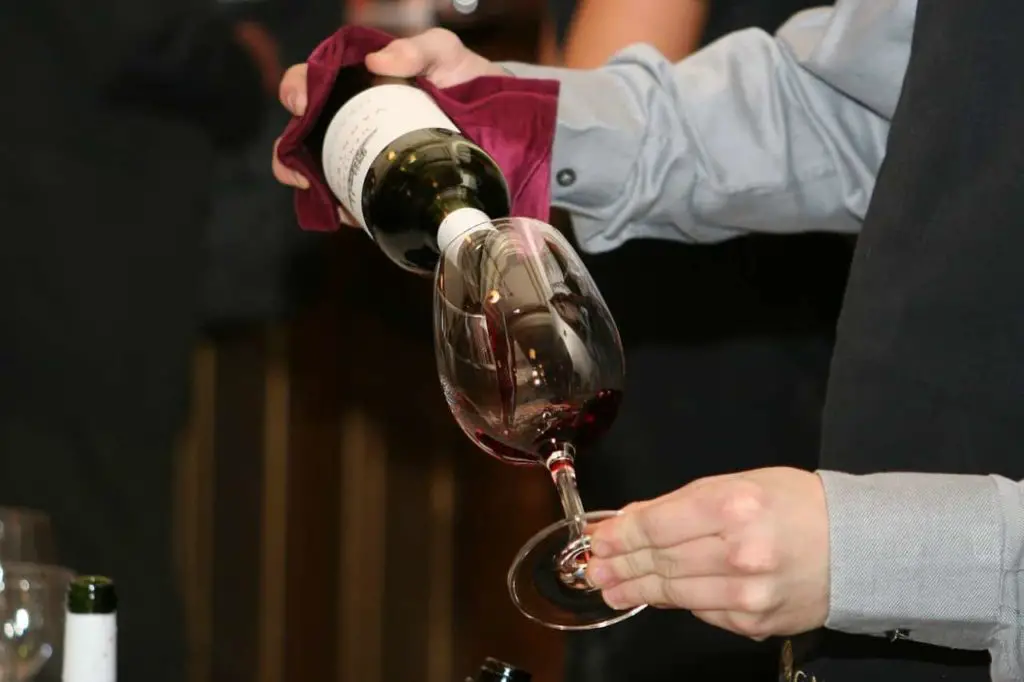
Since you have a bit of wine knowledge, the next thing you want to learn is proper etiquette when tasting wine.
When tasting wine, the environment you’re in can have as much effect on your senses as the wine itself. Therefore, make sure that you are in a good-tasting setting.
Avoid a room with too much crowd or noise since it will be difficult for you to concentrate on your wine. There should not be any pet odors, cooking smells, or strong perfumes as well since these will hinder your ability to smell the aroma of the wine clearly.
Keep in mind that you should consume different wines using a glass with the appropriate shape and size. Lastly, always assess the appearance of the wine.
- To note the wine’s depth of color, look straight down into your glass. As your skills at tasting wines become more proficient, you will be able to distinguish wines according to their aroma and color.
- Holding the wine up to the light can help you observe it through the side of your glass for its clarity. If the wine seems murky, this may indicate problems with fermentation. Likewise, it can mean that it is not filtered or has some sort of deposit that was moved when poured into the glass. A wine that looks brilliant and clear is a good sign.
- Tilting your glass established the weight and age of the wine. Those with a watery and pale color imply dull and bland wines. Red wines with a rusty or orange tone and white wines that are brown or tawny in color could mean that these are old or may have been past their prime.
Basic Steps On Wine Tasting
Wine experts or what is known in the industry as wine sommeliers, apply four basic steps to help them refine their palates during wine tasting.
- To evaluate the viscosity and color of the wine, look at the drink. Then, give it a swirl in the glass to see if it will form legs, running down the side of your glass. If a wine has good legs, it usually implies that it is riper, more mouth-filling, and bigger in comparison to those without legs.
- Smelling the wine allows you to determine its primary aromas. The right way to smell wines is to first hover over the rim of your glass and then take a few short sniffs. Allow the information to penetrate your brain.
- For red wines, are there any black, blue, or red fruits you detect?
- For white wines, are there any orchard, citrus, or tropical fruits you detect?
3. Take a sip of the wine into your mouth to taste it. Let it circle around your mouth and tongue before swallowing it
- Determine if its flavor is fruity, sweet, bitter, or acidic, which are all the common tastes of both white and red wines. Some of the flavors you may encounter include flower, fruit, barrel, herb, or mineral.
- Analyze the wine’s texture on your tongue. If it has more texture, it often implies that the wine is riper and its alcohol content is higher.
- How long the wine stays with you is established by using length. There must be a definite beginning, middle or mid-palate, and end or finish.
- When deciding on a wine, make sure to consider the first three steps above.
- Was the wine balanced or unbalanced? Was it too acidic or too tannic?
- Did you enjoy the wine?
- Was the wine unforgettable?
- What are the characteristics you like about the wine?
- Was the flavor of the wine harmonious or were every flavor proportionately combined
How to Judge the Taste of Wine

After learning how to properly taste wine, the next thing you want to find out is the exact taste of the wine you are looking for. There are several characteristics for which wines are judged. While some of there are subjective, some are measured either by scientific methods or a scale.
Next on this wine for beginners guide, we will take a closer look at all wines and compare these characteristics:
- The flavor is subjective. When it comes to wine you will usually hear the following adjectives describing it:
- Acidic. Wines with high acidity levels would be citrusy and tart while those with low acidity would be soft and creamy.
- Oaked. Typically, oaked wines are spicy and rich with hints of caramel, chocolate, and vanilla. On the other hand, unoaked wines are those that are floral, fruity, and fresh.
- Fruity. The grave variety and climate will determine the fruitiness of wine and you can detect it on the nose and the palate. Fruity red wines will often have a bright cherry aroma and a near currant or dark cherry taste.
- Tannic. This is what provides structure to wines. Wine high in tannic can be described as robust and heavy.
- Sweet. Sweetness is what helps in balancing the tannin and acid levels in wine. Off-dry wines often have a hint of juicy acidity and sweetness to them.
- Body. Body refers to the wine’s overall weight in your mouth. Full-bodied red wines would be weighty and rich.
- Depending on the variety of the grape, a wine’s nose or aroma can be:
- Fruity
- Floral
- Citrusy
- Earthy
- Vegetal
Other factors that will have an impact on the aroma of the wine are the winemaking process itself and storage conditions.
- Color. Red wines come in different hues. Their color is based on the amount of body the wine has.
- Light-bodied wines. These have a translucent and lighter color.
- Medium-bodied wines. They are not quite as translucent have a medium-rich hue.
- Full-bodied wines. Wines with a full-body have a deeper color, which is probably due to their higher tannin content.
- Old wines. If wines are aged for too long, their color will tend to be nearly brown.
- Alcohol By Volume. ABV refers to the amount of alcohol your wine contains, as well as its water content and other stuff. The ABV of most wines ranges from 12.5% to 14.5%.
- Temperature. The usual temperature for serving red wine is between 62 to 68 degrees.
- Age-ability. How long you can store a bottle will depend on the wine’s quality.
- Food pairings. Wine tastes and profiles tend to complement and pair well with specific foods.
Best Wines for Beginners
After discovering how to taste wines and what to look for, we will now examine wines that a lot of beginners appreciate. Do not be intimidated by the wine snobs. Wine is delightful and meant to be experienced by everyone. By simply adding a bottle of wine to your daily meals, you can transform them into exceptional events or make long-lasting memories with family and friends.
The first decision you need to make is whether you want to try white or red wines. Both of these are produced from grapes. However, the reason behind their difference in their color is because of the skins and the process of production. The amount of tannins is another notable difference.
Tannins give red wines their texture and, usually, the darker the wine, the more tannin it has. Although white wines have some tannins, they are normally defined more in terms of acidity. Rosé wines have light tannins. These wines have a pink color because they are fermented for a short time and with the red skin of the grape.
Usually, red wines are served at room temperature since chilling can cause the tannins to taste bitter. Meanwhile, white and Rosé wines have low tannin contents. That means they taste more delicious if you’ll server them at the appropriate cool temperature, which we will discuss in this article for wine beginners as well.
Aside from Red, White, and Rosé wines, you also have dessert wines and sparkling wines to choose from. Dessert wines are sweeter, reinforced with alcohol, and served with dessert. On the other hand, sparkling wines have notable carbonation which can occur naturally throughout the fermentation process or the winemaker can add it in.
It is advisable for beginners to wine to buy wines priced under £10 per bottle. It will boil down to taste regardless of whether you begin with Red, White, Rosé, or Fortified wines. Often, a lot of people start with white wines since these are lighter and generally easier on the palate. However, be a trailblazer and also have a taste of some of the reds!
Red
- Cabernet Sauvignon. Full-bodied with herbal notes
- Merlot. Fruity and spicy
- Pinot Noir. Delicate and fresh
- Zinfandel. Zesty
- Beaujolais Nouveau. Fruity and light
White
- Chardonnay. Buttery, fruity, and velvety
- Pinot Grigio/Gris. Light-bodied and crisp
- Riesling. Very sweet with intense fruit flavors
- Moscato. Fruity and usually sweet
- Sauvignon blanc. Dry, tart, and acidic, tasting of tropical fruit
- Prosecco. Sparkling, fruity, semi-sweet
Pink
- Rosé
- White Zinfandel
Best white wines
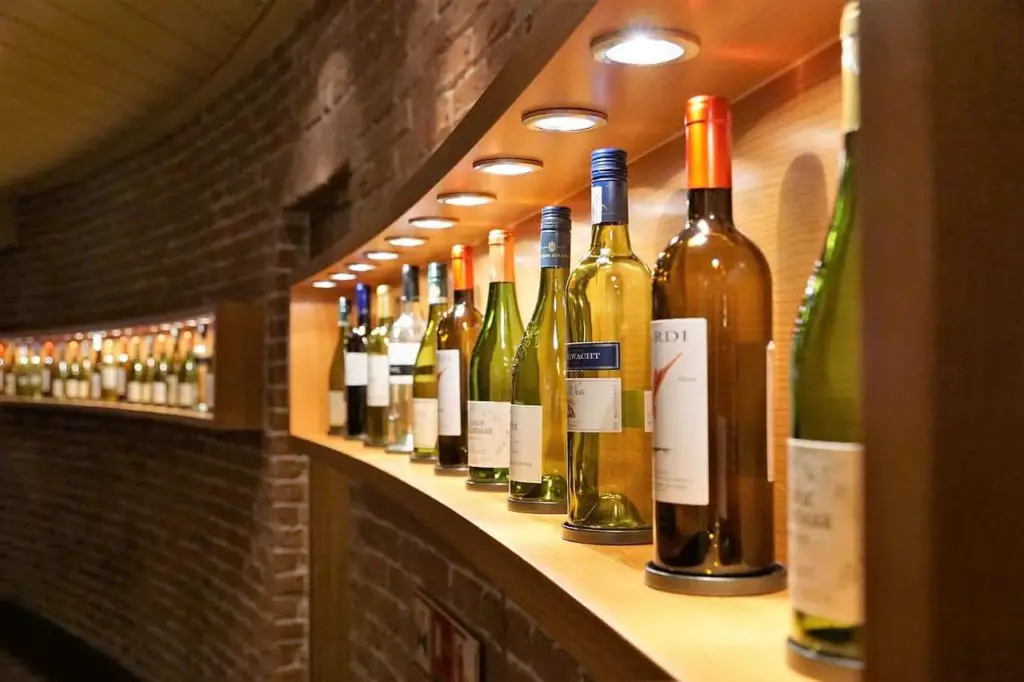
Chardonnay
The most popular white wine grape that has a unique flavor is Chardonnay. It is frequently defined as possessing flavors of pear and apple with notes of butter, oak, and toast. This is typically a non-sweet dry wine, but it can still be fruity. Because they are casked in oak barrels, the flavor of Chardonnays tends to be complex. Aside from hints of vanilla, there are also traces of clove, cinnamon, and other spices in there.
Chardonnays are produced in warmer climates. That’s why these wines can be marked with tropical flavors such as banana, pineapple, peach, or apricot. As a white wine, Chardonnay has no tannin. Its acidity levels will also vary based on where it was grown and where the wine was produced.
European Chardonnays tend to have higher acidity in comparison to Chardonnays that come from the US. The wine pairs nicely with gruyere, mild cheddar, provolone, and other mild cheeses, as well as with pork, chicken, seafood dishes, and even fruity desserts.
Pinot Grigio
Pinot Grigio is also called Pinot Gris wine. It’s the same grape but how you spell it will depend on its country of origin. Pinot Grigio originated in northern Italy while Pinot Gris is from France. Both are now grown around the world.
This type of white wine has a subtle and clean flavor. It has a mild and fruity flavor and not sweet at all. Pinot Grigio wines are light-bodied, crisp, and with notes of floral scents, lemon, and green apples. Moreover, it is low in acidity and is normally stored in stainless steel tanks. Pinot Grigio pair well with fish, shellfish, chicken, pasta with creamy sauces, and soft mild cheeses like brie, mozzarella, and gruyere.
Riesling
Riesling wines originated in the Rhine area of Germany and can vary from dry to very sweet. However, it is recognized for its crisp mineral and citrus flavors. This white wine is light-bodied and has bright acidity. Furthermore, it is rich and complex and can be defined as nutty, syrupy, and honeyed, with notes of peach, apricot, and citrus.
Spicy appetizers, salty cheeses such as blue cheese, aged Gouda, or feta, and sweet desserts pairs quite well with Riesling.
Moscato
The lightly fizzy, off-dry Moscato d’Asti wine originates from the Piedmont region of Italy. It is fruity and semi-sparkling with a light body. Its notes include almonds, green grapes, apricots, citrus, and peach. Moscato goes nicely with all cheeses, charcuterie, and antipasto. Likewise, it’s an excellent choice as a dessert wine.
Sauvignon Blanc
Originated in the Bordeaux region of France, Sauvignon blanc is a light-bodied, refreshing, and crisp white wite. It is now grown globally, most notably in New Zealand. Moreover, it has simple, straightforward flavors like grass, black currant, asparagus, green apple, gooseberries, kiwi, and citrus.
Sauvignon blanc pairs well with fish, shellfish, pork, chicken, sushi, and pasta dishes with creamy sauces.
Prosecco
The sparkling white wine from Italy is slightly sweet and fruity with citrus and green apple flavors. Its acidity content is very low and has no tannin. Prosecco is an affordable sparkling wine, making it extremely popular. You can pair it with seafood, spicy Asian dishes, seafood, pasta with creamy sauces, fried foods, and prosciutto.
Best red wines

Cabernet Sauvignon
This red grape makes for a richer, fuller wine. Although it has high tannins and acidity, it features fruity flavors that range from berries to plums. Cabernet Sauvignon includes flavors such s coconut, vanilla, coffee, toffee, chocolate, and spices.
The red wine is produced around the world but mostly in Bordeaux, France, as well as in Napa Valley, California. Cabernet Sauvignon is commonly aged in oak barrels, giving it a full-body and berry flavor like blueberry or black cherry. Moreover, it is a dry wine with high alcohol content. You can pair Cabernet Sauvignon with beef dishes, ribs, and roasted potatoes.
Merlot
The origin of Merlot is in Bordeaux, France. However, today, it is grown worldwide. The wine tastes fruity and fresh at first. It then ends with notes of vanilla, cloves, and mocha. Furthermore, it is a full-bodied, dry wine.
Merlot is the fifth most planted grapes in the world and ideal to pair with chicken, fish, and beef dishes.
Pinot Noir
Pinot Noir is a red grape that originated in the Burgundy region of France. But just like Merlot, it is now grown worldwide. It is almost light- to medium-bodied, has a low tannin, and is usually dry. The flavors of Pinot Noir include cherry and fruity berry flavor. It can also have flavors of rose and vanilla with oak overtones.
This red wine pairs beautifully with salmon, roasted duck, and roasted pork.
Zinfandel
Zinfandel has a lighter hue in comparison to Cabernet Sauvignon and Merlot. Nonetheless, this light-bodied red wine has moderate tannins, a high acidity, and relatively high alcohol levels, providing it with a bold taste. The flavors of Zinfandel combine jam, black pepper, cherry, blueberry, plum, licorice, and cranberry. Also, it often has a candied fruity taste ending with a smoky finish.
Zinfandel wines go really well with beef dishes, lamb, pork, poultry, pizza, spicy cheeses, and pasta.
Beaujolais Nouveau
This French wine is meant to be consumed shortly after bottling. It is released every November each year and will usually be sold out before the winter holidays enter. Beaujolais Nouveau has light tannins and it is fruity, light, and full-bodied. Its food pairings include roasted meats and salmon.
Best Pink Wines
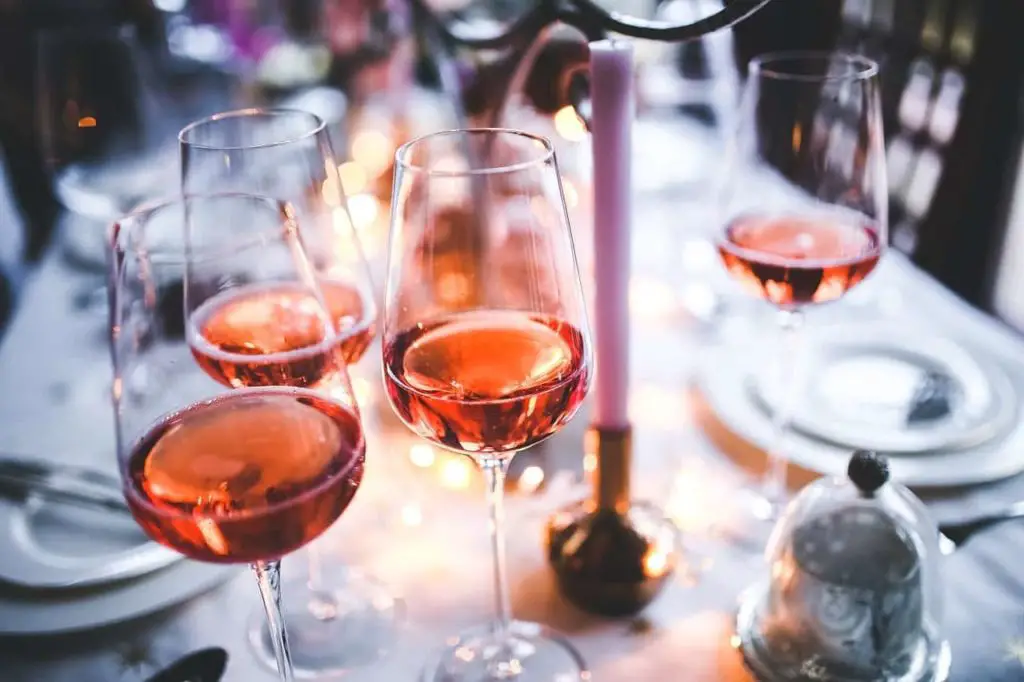
Rosé
Rosé is probably one of the most misunderstood wines on the market. It typically brings to mind a syrupy-sweet mixture that lingers in your mouth and on your tongue. Nevertheless, nothing could be further from the truth as Rosé can vary from the dry Provençal variety to off-dry and semi-sweet.
Additionally, these red wines can be sparkling or still and include flavors of citrus, melon, red fruit, and flowers. You can say that its finish can be comparable to rhubarb or celery. The best Rosé wines are produced in Provençe. Still, they can be created from a wide assortment of grapes that are cultivated worldwide. Typically, this wine is made with a red grape and the skins are removed shortly after pressing, leaving behind the color.
White Zinfandel
Quite often, White Zinfandel is the first wine that new to wine drinking will try. These wines are produced from the red Zinfandel grape, which is the most widely planted grape, and White Zinfandel wines use around 85% of the entire Zinfandel production.
White Zinfandel is an off-dry to sweet wine with a pink color that offers the following:
- Sweet taste
- Roughly only 125 calories per serving of 6 oz
- A low alcohol content that range from 9% to 10%
One fact about White Zinfandel that you’ll find interesting is that it preserved “old vine” vineyards in California. The popularity of White Zinfandel suggested that the “old vine” Zinfandel grape vineyards were not damaged when newer California grapes. Likewise, white wine grapes were becoming increasingly more prevalent.
White Zinfandel goes nicely with creamy pasta dishes, mild cheeses, rich pork, or salmon. It is also a good wine to pair with spicy Asian, Mexican, Creole, or Indian dishes.
Based on price tag and ratings, you’ll find the overall best wines for beginners listed below. The Wine Spectator’s rating scale is the basis of the wine ratings, with 100 points being the possible highest score.
Best Under £40
| Type of Grape | Producer | Name of Wine | Region | Wine Rating | Price |
| Chardonnay | Gaja | Chardonnay Vino da Tavola | Piedmont | 98 | £32 |
| Pinot Grigio/Gris | Weinbach | Pinot Gris Alsace Cuvée Ste.-Catherine | Alsace | 94 | £35 |
| Riesling | H. Dönnhoff | Riesling Spätlese Nahe Niederhäuser Hermannshöhle | Germany | 97 | £35 |
| Moscato | Cusumano | Moscato Sicilia dello Zucco | Sicily | 92 | £30 |
| Sauvignon Blanc | Altamura | Sauvignon Blanc | Napa Valley | 94 | £32 |
| Prosecco | Le Colture | Brut Valdobbiadene Prosecco Gerardo | Italy | 90 | £34 |
| Cabernet Sauvignon | Kendall-Jackson | Cabernet Sauvignon California Cardinale | California | 97 | £32 |
| Merlot | Paloma | Merlot Spring Mountain District | Napa Valley | 95 | £32 |
| Pinot Noir | W.H. Smith Wines | Pinot Noir Sonoma Coast Maritime Vineyard | Sonoma | 97 | £32 |
| Zinfandel | Carlisle | Zinfandel Russian River Valley Montafi Ranch | Sonoma | 96 | £34 |
| Rosé | Domaine Tempier | Bandol Rosé | Bandol Rosé | 92 | £30 |
| White Zinfandel | Hiyu Farms Smockshop Band | Spring Ephemeral | Spring Ephemeral | ** | £30 |
Best Under £30
| Type of Grape | Producer | Name of Wine | Region | Wine Rating | Price |
|
Chardonnay |
Rochioli | Chardonnay | Sonoma | 97 | £29 |
| Pinot Grigio/Gris | Domaines Schlumberger | Pinot Gris Alsace Grand Cru Kessler | Alsace | 93 | £22 |
|
Riesling |
Joh. Jos. Prüm | Riesling Auslese Mosel-Saar Ruwer Graacher Himmelreich | Germany | 99 | £23 |
|
Moscato |
Maculan | Moscato Veneto Dindarello | Veneto | 90 | £22 |
|
Sauvignon Blanc |
Araujo | Sauvignon Blanc Napa Valley Eisele Vineyard | Napa Valley | 94 | £23 |
|
Prosecco |
Le Colture | Dry Valdobbiadene Prosecco Superiore di Cartizze | Italy | 91 | £25 |
| Cabernet Sauvignon | Caymus | Cabernet Sauvignon Napa Valley Special Selection | Napa Valley | 98 | £26 |
|
Merlot |
Baer | Ursa | Columbia Valley | 95 | £22 |
| Pinot Noir | Maysara | Pinot Noir McMinnville Estate Cuvée | Willamette Valley | 97 | £23 |
| Zinfandel | Carlisle | Zinfandel Russian River Valley Papera Ranch | Sonoma | 96 | £29 |
|
Rosé |
Château de Pibarnon | Bandol Rosé | Provençe | 92 | £22 |
Best Under £20
| Type of Grape | Producer | Name of Wine | Region | Wine Rating | Price |
| Chardonnay | Gainey | Chardonnay Limited Selection | Santa Ynez Valley | 98 | £19 |
| Pinot Grigio/Gris | Movia | Pinot Grigio Brda | Slovenia | 93 | £17 |
| Riesling | Joh. Jos. Prüm | Riesling Auslese Mosel-Saar Ruwer Wehlener Sonnenuhr | Germany | 98 | £17 |
| Moscato | Barberani | Moscato Umbria Passito Villa Monticelli | Umbria | 90 | £17 |
| Sauvignon Blanc | Merry Edwards | Sauvignon Blanc | Sonoma | 96 | £20 |
| Prosecco | Bortolomiol | Brut Valdobbiadene Prosecco Superiore lus Naturae | Italy | 90 | £20 |
| Cabernet Sauvignon | Flora Springs | Cabernet Sauvignon Napa Valley Reserve | Napa Valley | 96 | £20 |
| Merlot | Leonetti | Merlot | Washington | 96 | £18 |
| Pinot Noir | Colene Clemens | Pinot Noir Chehalem Mountains Dopp Creek | Willamette Valley | 95 | £19 |
| Zinfandel | Turley | Zinfandel Howell Mountain Black-Sears Vineyard | Napa Valley | 95 | £19 |
| Rosé | Beckmen | Grenache Santa Ynez Valley Rosé Purisima Mountain Vineyard | California | 91 | £15 |
| White Zinfandel | Turley | White Zinfandel | Napa Valley | 88 | £25 |
Best Under £10
| Type of Grape | Producer | Name of Wine | Region | Wine Rating | Price |
| Chardonnay | Saintsbury | Chardonnay | Carneros | 95 | £10 |
| Pinot Grigio/Gris | 14 Hands | Pinot Grigio | Washington | 88 | £7 |
| Riesling | £ | ||||
| Moscato | Maculan | Moscato Veneto Dindarello | Veneto | 90 | £10 |
| Sauvignon Blanc | Cloudy Bay | Sauvignon Blanc | New Zealand | 94 | £10 |
| Prosecco | C. Von Schubert | Riesling Spätlese Mosel-Saar-Ruwer Maximin Grünhäuse Abtsberg | Germany | 96 | £10 |
| Cabernet Sauvignon | Dunn | Cabernet Sauvignon | Napa Valley | £9 | |
| Merlot | Belvedere | Merlot Alexander Valley Robert Young Vineyards | Sonoma | 94 | £8 |
| Pinot Noir | Acacia | Pinot Noir Napa Valley | Carneros | 95 | £8 |
| Zinfandel | Ancient Peaks | Zinfandel Paso Robles | California | 93 | £10 |
| Beaujolais Nouveau | Jean Bererd & Fils | Beaujolais-Villages Nouveau Domaine de la Madone | Beaujolais | 88 | £9 |
| Rosé | Domaine de la Terre Rouge | Vin Gris D’Amador Sierra Foothills | California | 92 | £10 |
| White Zinfandel | Coastal Vines Cellars | White Zinfandel | California | ** | £10 |
Frequently Asked Questions
What are the 5 classifications of wine?
You’ll notice that the shelves in a liquor store are full of different types of wines with different names. That’s because wines come in hundreds of varieties. However, they all fall under five categories, which are Red, White, Rosé, Sparkling, and Dessert.
What is the most popular red wine?
Red wines are available in many varieties but there is no doubt that Cabernet Sauvignon is the most favorite and well-loved.
Is Pinot Noir sweeter than Merlot?
While merlot has a fruity and sweet character, Pinot Noir’s flavour is less sweet.
Conclusion
As your wine journey progress, make sure to give new and diverse wines on the market a chance. Ignore the wine snobs and just keep expanding your horizon. The key here is to taste as many wine bottles as you can and then narrow them down to the ones you like the best. At the end of the day, it all boils down to your personal preference and how you want to enjoy your journey. Make sure to also read reviews, hear out suggestions, and don’t forget to remember what you’ve learned in this wine for beginners guide.

